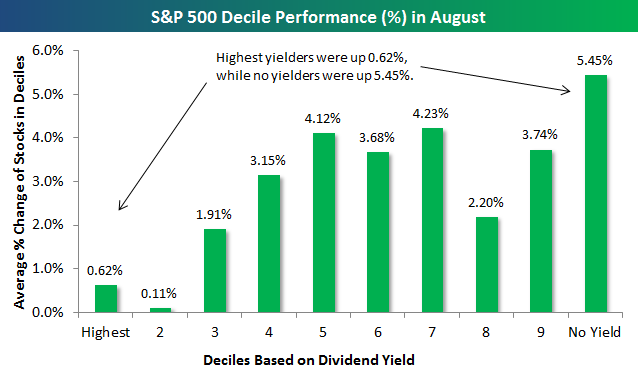By: Jose Torres Interactive Brokers’ Senior Economist
Monetary policy tightening in the U.S. and other countries is continuing to erode demand, with manufacturing orders in China declining substantially, Canadian building permits contracting and European retail sales volumes shrinking. Even with weakening demand, however, new wrinkles in supply chain problems and persistent price increases are clouding the outlook for economic prospects, which is driving considerable market volatility by investors who fear additional aggressive interest rate increases may crimp corporate profits and weigh on asset valuations.
While China is maintaining accommodative monetary policies as its economy slumps due to efforts to contain COVID-19 alongside reduced export demand, various central banks have been aggressively raising interest rates while paring down balance sheets to curtail decades-high inflation. Despite central banks’ slow but notable progress in slowing inflationary pressures, U.S. equity indexes have been generating volatile intraday movements this week because investors have become less optimistic about a potentially lower terminal rate and the possibility of the Fed cutting rates in 2023 while at the same time, earnings estimates have drifted lower. Higher-than-expected interest rates are likely to cause investors to further discount the value of future cash flows provided by equities and bonds, which lowers the valuations for those securities. Higher interest rates also hurt corporate earnings, further dampening sentiment for equities, and aggressive monetary tightening also entails the risk of sparking recessions.
The negative effects of higher rates and reduced central bank balance sheets were evident at this week’s Goldman Sachs U.S. Financial Services Conference, with CEOs Brian Moynihan of Bank of America, Charles Scharf of Wells Fargo and David Solomon of Goldman Sachs providing warnings concerning consumer spending, labor conditions and asset valuations. Consistent with dim Black Friday sales this year, Moynihan noted that November spending was weak, with transactions up only 5% on the month. He expects three quarters of negative GDP growth in 2023, followed by an increase in the fourth quarter. Scharf of Wells Fargo echoed this message, explaining that the bank is seeing lackluster credit and debit-card spending. Not surprisingly, spending weakness was dominated by goods, while leisure and hospitality spending supported sales. This trend was covered earlier this week in an IBKR podcast. During the conference, Goldman’s Solomon said he expects lower stock and residential real estate values next year and he assigns a low, 35% chance of the U.S. avoiding a recession. Bank of America is slowing hiring, while Goldman, Morgan Stanley and Well Fargo are cutting jobs to offset the impact of revenue weakness.
While news this week demonstrated that demand is weakening in numerous economies, China was a double-edged sword. On Sunday, the CNBC Supply Chain Heat Map showed U.S. orders for China manufacturing tanked 40%. On one level, the development is encouraging because it demonstrates that global consumers may finally be tightening their purse strings, thereby weakening demand that has partially fueled inflation.
With less cargo to ship, Chinese companies are managing low vehicle utilization by reducing the frequency with which they deliver products to foreign ports. This reduced frequency is delaying the delivery of items needed to assemble products and for business-to-business companies and retailers to maintain inventories. Rolling over cargo, or moving cargo from one ship to another to combine shipments, is also delaying deliveries. The problem could potentially worsen with the low volume of manufacturing orders causing Chinese companies to shut down two weeks earlier than normal as part of the Chinese Lunar New Year celebration next month. Those factors have some manufacturers concerned that 2023 may kick off with an escalation of supply chain problems.
Persistent supply chain headaches could also create additional inflation by encouraging more U.S. companies to onshore manufacturing or by creating pressure for foreign manufacturers to claim a U.S. beachhead. Just recently, Taiwan Semiconductor Manufacturing announced it was increasing its $12 billion investment in building a semiconductor plant in Arizona to $40 billion, a move that is expected to provide increased reliability for U.S. technology companies. At a time when the U.S. is struggling with a persistent labor shortage that is creating strong wage pressure, the Taiwan Semiconductor development isn’t an isolated example of onshoring. In this year alone, approximately 400,000 jobs are expected to be created in the U.S. because of onshoring, according to the Reshoring Initiative. As U.S. companies choose dependability over cost efficiency, they must contend with domestic labor being considerably more expensive than in other countries while the resulting increased demand for workers is likely to make this pay gap even larger.
The Bank of Canada, meanwhile, hiked its overnight rate to 4.25% and its Bank Rate to 4.50% on Wednesday. The 50 basis point increase was in-line with expectations. The action comes as the country’s CPI showed inflation remained at 6.9% in October while core inflation softened to 5.3%. Core inflation has softened from the July 2022 high of 5.5% but is still more than twice the central bank’s target of 2%, similar to the U.S. In a statement on Wednesday, the central bank explained that the decline may be an early indication of easing price pressure. In another indication that the economy may be cooling, Canadian building permits, which point to future construction activity, dropped 1.4% month-over-month in October, the second consecutive decline. On a year-over-year basis, permits dropped 6.3%. Permits for non-residential buildings increased, but the decline in permits for both multi-family and single-family home construction pulled the monthly total into negative territory. Real estate construction has a considerable impact on the broader economy and is a powerful economic stimulant via job creation, goods spending, loan growth, etc.
Among data released this week, declining consumer demand led to October retail sales in the eurozone declining 1.8%, registering the largest drop since the 2.1% decline in December of 2021. The news may help alleviate some concerns that inflation is yet to be tamed after last month’s data showed prices increased 10% in November. Retail sales face strong headwinds, and while higher interest rates are significant, a more painful force exists—skyrocketing energy costs that are likely to make winter heating bills a pricey ticket. Electricity, natural gas and gasoline retail prices were estimated to have increased 73%, 122% and 36%, respectively, earlier this year as sanctions against Russia have led to energy commodity scarcity, according to the International Monetary Fund.
This post first appeared on December 8th, 2022 on the IBKR Traders’ Insight blog
PHOTO CREDIT: https://www.shutterstock.com/g/lightspring
Via SHUTTERSTOCK
DISCLOSURE: INTERACTIVE BROKERS
The analysis in this material is provided for information only and is not and should not be construed as an offer to sell or the solicitation of an offer to buy any security. To the extent that this material discusses general market activity, industry or sector trends or other broad-based economic or political conditions, it should not be construed as research or investment advice. To the extent that it includes references to specific securities, commodities, currencies, or other instruments, those references do not constitute a recommendation by IBKR to buy, sell or hold such investments. This material does not and is not intended to take into account the particular financial conditions, investment objectives or requirements of individual customers. Before acting on this material, you should consider whether it is suitable for your particular circumstances and, as necessary, seek professional advice.
The views and opinions expressed herein are those of the author and do not necessarily reflect the views of Interactive Brokers LLC, its affiliates, or its employees.
Any trading symbols displayed are for illustrative purposes only and are not intended to portray recommendations.
In accordance with EU regulation: The statements in this document shall not be considered as an objective or independent explanation of the matters. Please note that this document (a) has not been prepared in accordance with legal requirements designed to promote the independence of investment research, and (b) is not subject to any prohibition on dealing ahead of the dissemination or publication of investment research.



